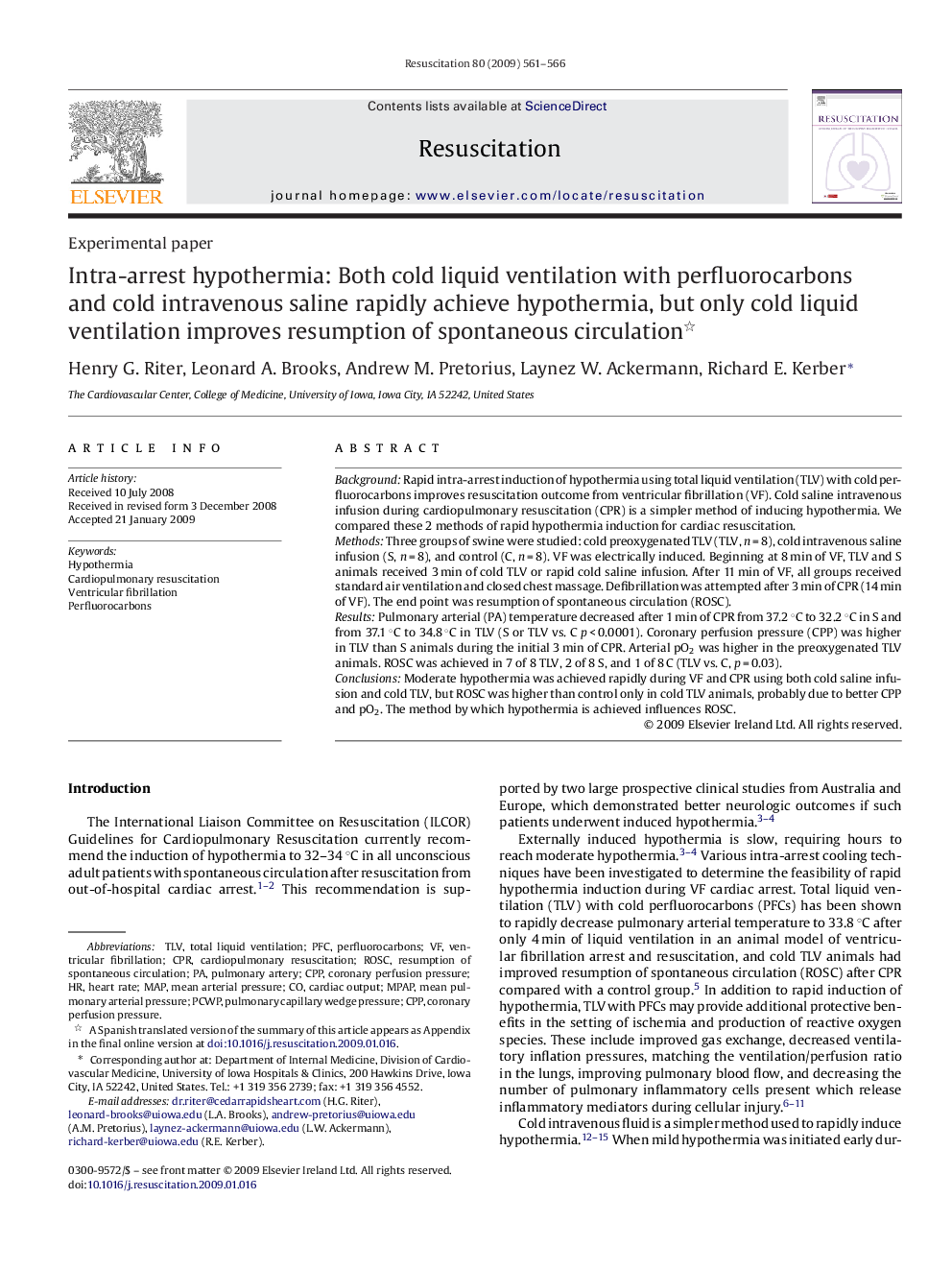| Article ID | Journal | Published Year | Pages | File Type |
|---|---|---|---|---|
| 3011186 | Resuscitation | 2009 | 6 Pages |
BackgroundRapid intra-arrest induction of hypothermia using total liquid ventilation (TLV) with cold perfluorocarbons improves resuscitation outcome from ventricular fibrillation (VF). Cold saline intravenous infusion during cardiopulmonary resuscitation (CPR) is a simpler method of inducing hypothermia. We compared these 2 methods of rapid hypothermia induction for cardiac resuscitation.MethodsThree groups of swine were studied: cold preoxygenated TLV (TLV, n = 8), cold intravenous saline infusion (S, n = 8), and control (C, n = 8). VF was electrically induced. Beginning at 8 min of VF, TLV and S animals received 3 min of cold TLV or rapid cold saline infusion. After 11 min of VF, all groups received standard air ventilation and closed chest massage. Defibrillation was attempted after 3 min of CPR (14 min of VF). The end point was resumption of spontaneous circulation (ROSC).ResultsPulmonary arterial (PA) temperature decreased after 1 min of CPR from 37.2 °C to 32.2 °C in S and from 37.1 °C to 34.8 °C in TLV (S or TLV vs. C p < 0.0001). Coronary perfusion pressure (CPP) was higher in TLV than S animals during the initial 3 min of CPR. Arterial pO2 was higher in the preoxygenated TLV animals. ROSC was achieved in 7 of 8 TLV, 2 of 8 S, and 1 of 8 C (TLV vs. C, p = 0.03).ConclusionsModerate hypothermia was achieved rapidly during VF and CPR using both cold saline infusion and cold TLV, but ROSC was higher than control only in cold TLV animals, probably due to better CPP and pO2. The method by which hypothermia is achieved influences ROSC.
